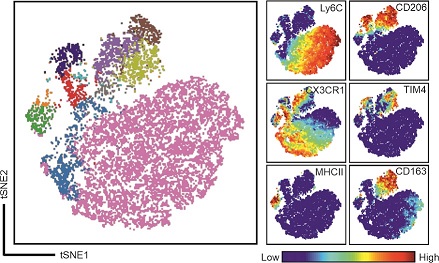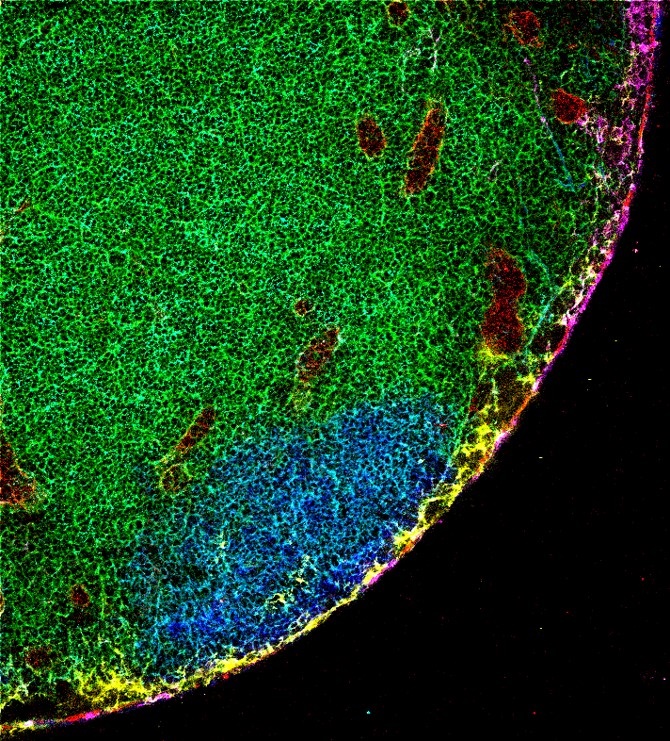Mass Cytometry
Mass cytometry (CyTOF) is a cutting-edge technology that combines flow cytometry with mass spectrometry to enable high-dimensional single-cell analysis. Instead of fluorescent markers, CyTOF uses metal-tagged antibodies, eliminating spectral overlap and allowing the simultaneous detection of dozens of cellular markers with unparalleled resolution. This makes it a powerful tool for immunology, cancer research, and systems biology, providing deep insights into complex cell populations. Our Cytometry Unit offers operator-assisted Helios services.
Helios (CyTOF)

The Helios is a modern mass cytometer that quantifies cell-associated heavy metals using inductively coupled plasma mass spectrometry. With an analytical range of 75-209 Dalton, it provides users with 135 detection channels that can simultaneously resolve multiple elemental probes at high acquisition rates. Superior mass resolution provides researchers with the ability to differentiate adjacent peaks.


(image by H. Jokela)
Imaging mass cytometry (IMC) is an advanced technology that combines mass cytometry with high-resolution imaging to provide spatially resolved, multiparametric analysis of tissue sections and cellular samples. Using metal-tagged antibodies, IMC enables the simultaneous detection of numerous biomarkers without spectral overlap, preserving tissue architecture while offering deep insights into cellular interactions and microenvironments.
Hyperion
This is the imaging unit, which combined with the mass cytometer Helios forms the platform for imaging mass cytometry.

The platform can simultaneously detect up to 37 protein markers in biological samples, including FFPE sections, frozen tissue sections, or cells deposited onto glass slides (liquid biopsies). This allows researchers to investigate cellular subpopulations in various tissue microenvironments. The system allows for cellular profiling in spatial proximity, enabling subpopulation profiling and exploration of relationships of neighboring cells within the context of the tissue structure.
Proximity, enabling subpopulation profiling and exploration of relationships of neighboring cells within the context of the tissue structure.

Technical data
Technical data for our Mass Cytometry Instruments can be found on the webpage of Standard Biotools Inc. https://www.standardbio.com/.Kante A, Chevalier MF, Sène D, Chauffier J, Mouly S et al.: Mass cytometry: exploring the immune landscape of systemic autoimmune and inflammatory diseases in the past fourteen years. Frontiers in Immunology Vol.15; January 2025. https://doi.org/10.3389/fimmu.2024.1509782
Spitzer, MH. and Nolan GP. Mass Cytometry: Single Cells, Many Features; Cell 165, May 2016. http://dx.doi.org/10.1016/j.cell.2016.04.019
Baharlou H, Canete NP, Cunningham AL, Harman AN and Patrick E: Mass Cytometry Imaging for the Study of Human Diseases—Applications and Data Analysis Strategies. Frontiers in Immunology Vol.10; Nov 2019. https://doi.org/10.3389/fimmu.2019.02657
Tracey LJ, An Y, Justice MJ: CyTOF: An Emerging Technology for Single-Cell Proteomics in the Mouse. Current Protocols e118, Vol.1; April 2021. https://doi.org/10.1002/cpz1.118



